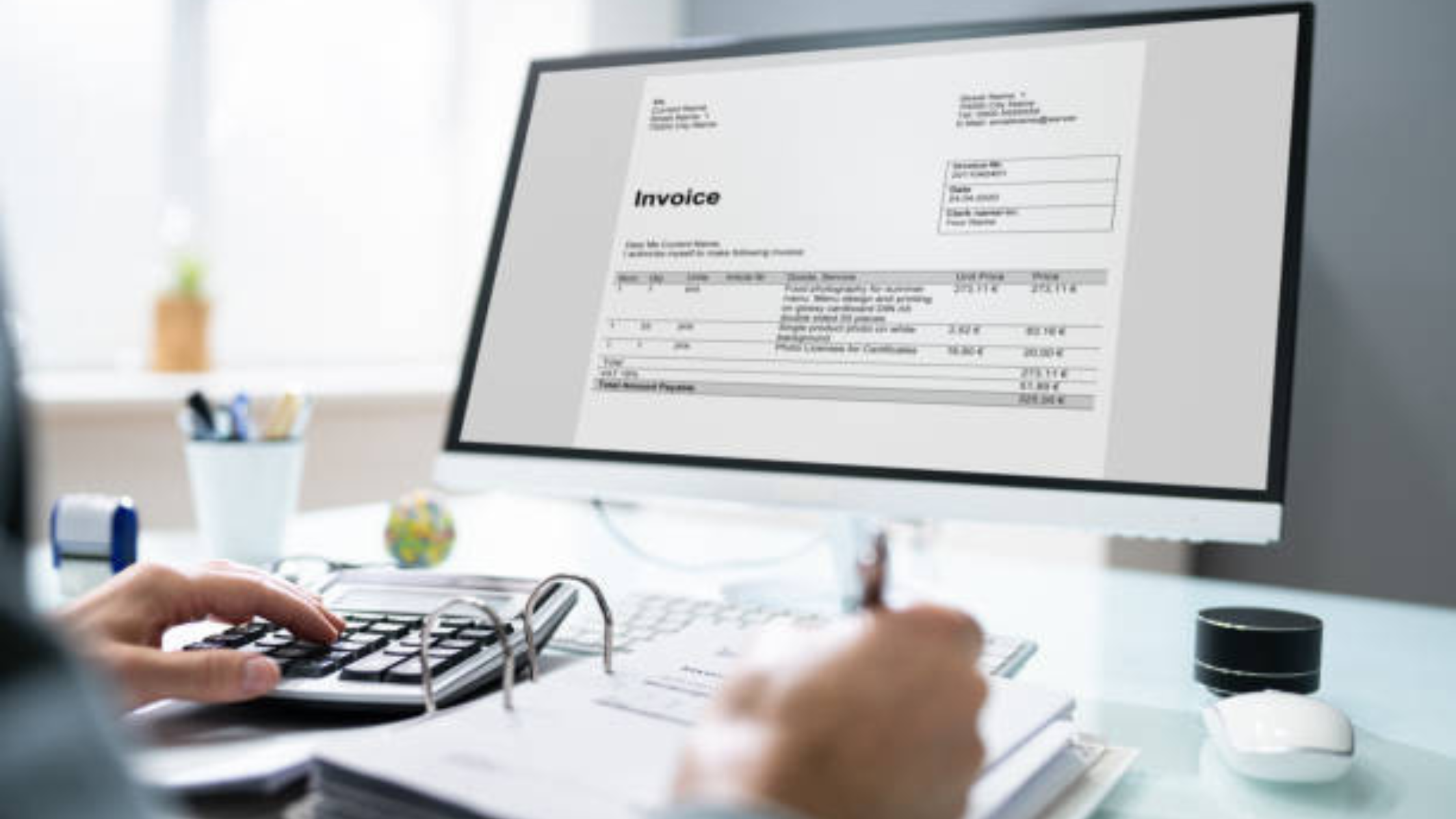Efficiently Generate LTA Bills for Reimbursement

Are you tired of the tedious process of generating bills for reimbursement related to LTAs (Local Travel Allowances)?
Efficiency is key in today's fast-paced world, and in the realm of financial matters, time is money. In this era of digital solutions, streamlining the process of creating LTA bills is essential for both individuals and organizations. By embracing innovative tools and techniques, one can simplify and expedite the billing process, ensuring accuracy and promptness in reimbursement procedures. Join us on a journey to discover how to efficiently generate LTA bills, saving time and effort while enhancing productivity and financial management. Let's delve into the realm of optimizing bill generation for LTAs, empowering you to navigate the reimbursement landscape with ease and precision.
Understanding LTA Bills
When it comes to claiming Leave Travel Allowance (LTA), one of the crucial aspects is understanding the LTA bills. LTA bills are essential documents that detail the expenses incurred by an employee during their travel for claiming the allowance. These bills serve as proof of the journey undertaken and the expenses related to it.
The vital components of an LTA bill typically include the employee's name and details, the purpose of the journey, travel dates, mode of transportation, total expenses incurred, and any supporting receipts. Ensuring that these details are accurately captured is crucial in the reimbursement process.
To generate a correct LTA bill, it is important to avoid common mistakes such as missing or incorrect information. Any errors in the employee's details, travel dates, or total expenses can lead to delays or rejections in the reimbursement process. Additionally, improper calculations can result in discrepancies in the total amount claimed.
Another common mistake is not attaching necessary receipts. Receipts serve as evidence of the expenses claimed and are essential for verifying the authenticity of the bill. Without proper receipts, the LTA claim may be questioned or denied.
Exceeding the maximum reimbursement limit is another error to avoid. Each company or organization has a set limit for LTA claims, and surpassing this limit can lead to only partial reimbursement or no reimbursement at all.
Lastly, submitting the LTA bill past the specified deadline can also cause complications. Timely submission is crucial to ensure that the reimbursement process is smooth and efficient. Missing the deadline can result in delays in processing the claim or even rejection.
By paying attention to these details and avoiding these common errors, employees can streamline the process of claiming LTA and ensure timely reimbursement for their travel expenses.
In addition to the essential components and common mistakes, employees should also be aware of the importance of detailed documentation. Keeping thorough records of all travel-related expenses, including accommodation, meals, transportation, and any other eligible costs, can help in accurately preparing the LTA bill and justifying the claimed amount.
Moreover, communication with the finance or HR department regarding any uncertainties or clarifications on LTA policies can prevent misunderstandings and errors in the billing process. Employees should familiarize themselves with the company's reimbursement guidelines to ensure compliance and smooth processing of their claims.
Furthermore, utilizing digital tools or templates provided by the company for creating LTA bills can simplify the process and reduce the chances of errors. These tools often come with built-in validations to ensure that all necessary information is included before submission.
By following these best practices and maintaining attention to detail, employees can optimize their LTA claim process, minimize errors, and expedite the reimbursement of their travel expenses.
Efficient Ways to Generate LTA Bills
The efficient generation of Leave Travel Allowance (LTA) bills is essential for both employees and employers. Leveraging technology can significantly streamline this process, saving time and ensuring accuracy. One effective way to generate LTA bills efficiently is by utilizing online LTA bill generators like the one offered by Bill Generator.
These platforms are designed to simplify the bill creation process by providing a variety of customizable templates. Businesses can choose a template that best fits their needs and easily input the required information to create professional and appealing bills. By utilizing these templates, businesses can ensure consistency in their billing documents, presenting a unified and professional image to clients and employees.
Organizing and categorizing expenses is another key aspect of efficient LTA bill generation. By maintaining accurate records of expenses related to leave travel, businesses can expedite the billing process and reduce the likelihood of errors. This organization is particularly crucial for employees seeking reimbursement for their travel expenses, as it helps to verify the authenticity of their claims.
To optimize the workflow of bill generation, businesses should focus on several key factors. Firstly, it is essential to maintain a detailed record of LTA receipts, ensuring that all relevant expenses are accounted for. This not only facilitates the billing process but also serves as a reference point for future audits or inquiries.
Secondly, utilizing user-friendly interfaces like the Bill Generator platform can greatly enhance the efficiency of bill generation. Platforms that offer intuitive interfaces and easy navigation simplify the process for users, minimizing the time and effort required to create and manage bills.
Lastly, accuracy, speed, and security are paramount in the billing process. By ensuring that all information is input correctly, businesses can avoid costly errors and delays. Speed is also crucial, especially in scenarios where timely reimbursement is essential. Additionally, maintaining robust security measures to protect sensitive billing data is vital for safeguarding the financial interests of the business and its employees.
By implementing these efficient ways to generate LTA bills, businesses can enhance their operational efficiency, improve accuracy, and streamline the billing process for both employees and employers. Technology-enabled solutions like online bill generators offer a convenient and effective means of creating professional and compliant LTA bills, ultimately contributing to a more efficient and transparent financial management system.
Ensuring Accuracy and Compliance
In the fast-paced business world, accuracy and compliance are crucial aspects that every organization must prioritize. This blog section will delve into the importance of double-checking calculations and details, as well as ensuring compliance with company policies and regulations.
Double-Checking Calculations and Details: A Foundation for Precision
One of the fundamental pillars of maintaining accuracy within a business is the meticulous practice of double-checking calculations and details. Whether it pertains to financial figures, project timelines, inventory records, or any other data-driven aspect, a simple error can have far-reaching consequences. Implementing a robust process of cross-verification and thorough review not only minimizes the risk of inaccuracies but also enhances overall precision. This attention to detail can be a key differentiator for businesses striving for excellence in their operations.
Compliance with Company Policies and Regulations: Upholding Ethical Standards
Beyond just accuracy, compliance with company policies and regulations is a cornerstone of ethical business conduct. Adhering to internal guidelines and external laws is not merely a legal requirement but a demonstration of a company's commitment to integrity and responsibility. Establishing a culture of compliance fosters trust among employees, customers, and partners, setting the stage for sustainable growth and long-term success.
Continuous Improvement through Feedback and Training
To further bolster accuracy and compliance, organizations should embrace a culture of continuous improvement. Feedback mechanisms that encourage employees to report potential errors or deviations can help in identifying and rectifying issues proactively. Additionally, regular training programs on data integrity, regulatory updates, and best practices can equip staff with the knowledge and skills necessary to navigate complex compliance landscapes.
Harnessing Technology for Enhanced Monitoring and Reporting
Technology plays a pivotal role in ensuring accuracy and compliance. Utilizing advanced software solutions for data analytics, monitoring tools for regulatory changes, and secure platforms for document management can streamline processes and enhance transparency. By leveraging technology effectively, organizations can not only automate routine compliance tasks but also gain valuable insights for strategic decision-making.
By focusing on ensuring accuracy through rigorous double-checking of calculations and details, and by upholding compliance with company policies and regulations, businesses can fortify their foundation for sustainable growth and success. Embracing a culture of continuous improvement and harnessing technology as an enabler, organizations can navigate the complexities of the modern business landscape with confidence and integrity.
Submitting and Managing LTA Bills
Submitting and managing LTA bills is a critical process that can significantly impact an individual's reimbursement experience. It is essential to pay attention to various details to ensure timely reimbursement and proper documentation. Many individuals encounter challenges when submitting their LTA bills, which can lead to delays or rejections in reimbursement. By addressing common mistakes and implementing effective strategies, the reimbursement process can be streamlined for a more efficient and hassle-free experience.
Common Mistakes to Avoid
To begin with, one of the most common errors individuals make is missing deadlines for bill submission. Setting reminders well in advance of the deadline is crucial to avoid this issue. Utilizing tools such as calendar alerts or task management apps can be beneficial in ensuring that submission deadlines are not overlooked.
Another prevalent mistake is failing to provide all the required documentation. It is imperative to gather and organize all receipts, boarding passes, and other relevant documents before submitting the bill. Creating a detailed checklist of necessary items can facilitate this process and reduce the likelihood of missing essential paperwork.
Exceeding the specified reimbursement limit is another pitfall to be wary of. Thoroughly reviewing the reimbursement policy and understanding the limits beforehand can prevent this oversight. If the anticipated expenses are likely to surpass the set limit, it is advisable to seek guidance from the appropriate department to explore available options.
Tracking and Management
After submitting the bills, effective tracking and management are essential. Leveraging digital tools or apps to store receipts digitally can ensure easy access to documentation when required. Creating a designated folder exclusively for LTA bills can further aid in organization and accessibility.
Maintaining a well-structured spreadsheet to track submissions and reimbursements offers a comprehensive overview of each bill's status. This practice enables individuals to monitor the progress of their claims, identify any discrepancies, and follow up promptly if necessary. Regularly reviewing the status of submitted bills and maintaining open communication with the relevant department can help expedite the reimbursement process.
Conclusion
Submitting and managing LTA bills demands meticulous attention to detail and proactive planning. By avoiding common pitfalls, staying organized, and employing effective tracking methods, individuals can streamline the reimbursement process, ensuring that their claims are processed accurately and promptly to receive the rightful reimbursement.
Conclusion
By implementing streamlined processes and utilizing digital tools, organizations can efficiently generate LTA bills for reimbursement. This not only saves time and reduces errors but also ensures that employees are promptly reimbursed for their expenses, leading to increased satisfaction and productivity within the workforce. Embracing technology and automation in this aspect of expense management can greatly benefit both employees and the organization as a whole.







